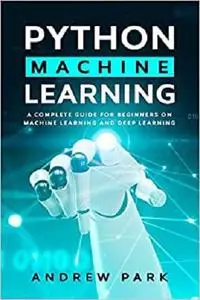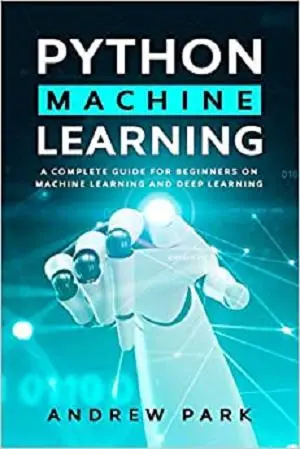Python Machine Learning: A Complete Guide for Beginners on Machine Learning and Deep Learning with Python (Data Science Mastery) by Andrew Park
English | December 17, 2019 | ISBN: 1676467688 | 125 pages | Rar (PDF, AZW3) | 1.44 Mb
English | December 17, 2019 | ISBN: 1676467688 | 125 pages | Rar (PDF, AZW3) | 1.44 Mb
If you want to learn how to design and master different Machine Learning algorithms quickly and easily, then keep reading.
Today, we live in the era of Artificial Intelligence. Self-driving cars, customized product recommendations, real-time pricing, speech and facial recognition are just a few examples proving this truth. Also, think about medical diagnostics or automation of mundane and repetitive labor tasks; all these highlight the fact that we live in interesting times. From research topics to projects and applications in different stages of production, there is a lot going on in the world of Machine Learning.
Machines and automation represent a huge part of our daily life. They are becoming part of our experience and existence. This is Machine Learning. Artificial Intelligence is currently one of the most thriving fields any programmer would wish to delve into, and for a good reason: this is the future!
Simply put, Machine Learning is about teaching machines to think and make decisions as we would. The difference between the way machines learn and the way we do is that while for the most part we learn from experiences, machines learn from data.
Starting from scratch, Python Machine Learning explains how this happens, how machines build their experience and compounding knowledge. Data forms the core of Machine Learning because within data lie truths whose depths exceed our imagination. The computations machines can perform on data are incredible, beyond anything a human brain could do. Once we introduce data to a machine learning model, we must create an environment where we update the data stream frequently. This builds the machine’s learning ability. The more data Machine Learning models are exposed to, the easier it is for these models to expand their potential.
Some of the topics that we will discuss inside include:
- What is Machine Learning and how it is applied in real-world situations
- Understanding the differences between Machine Learning, Deep Learning, and Artificial Intelligence
- Supervised learning, unsupervised learning, and semi-supervised learning
- The place of Regression techniques in Machine Learning, including Linear Regression in Python
- Machine learning training models
- How to use Lists and Modules in Python
- The 12 essential libraries for Machine Learning in Python
- What is the Tensorflow library
- Artificial Neural Networks
- And Much More!
Even if some concepts of Machine Learning algorithms can appear complex to most computer programming beginners, this book takes the time to explain them in a simple and concise way.



